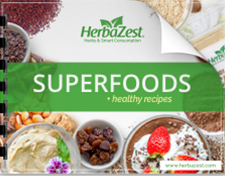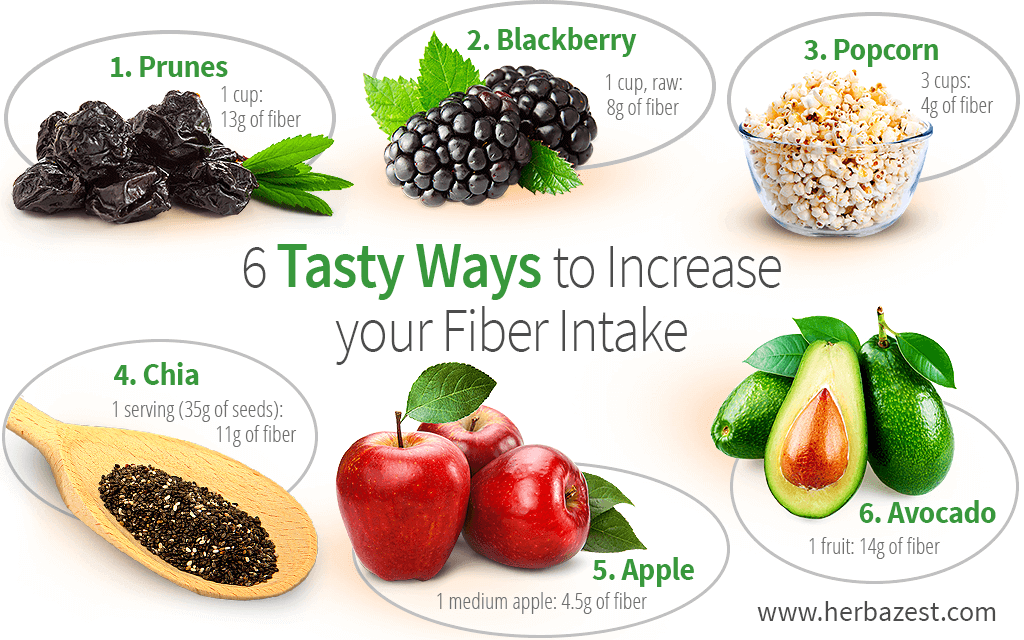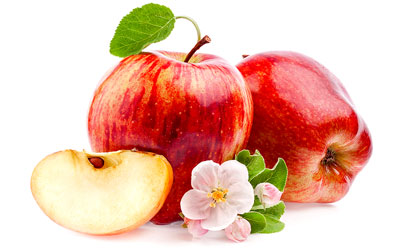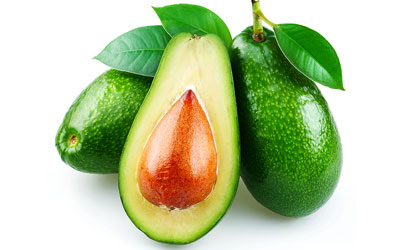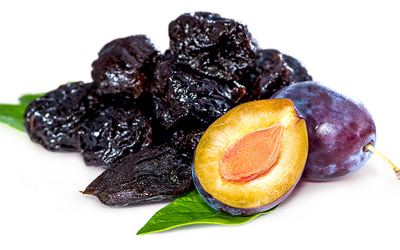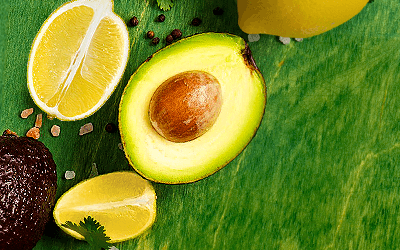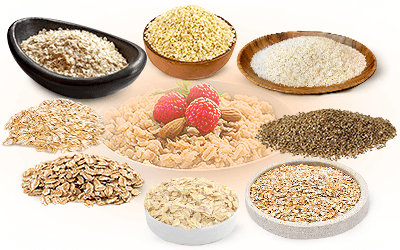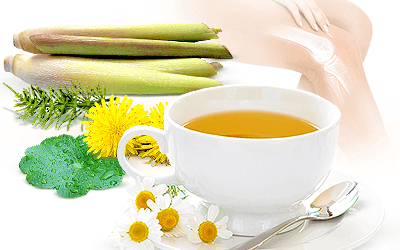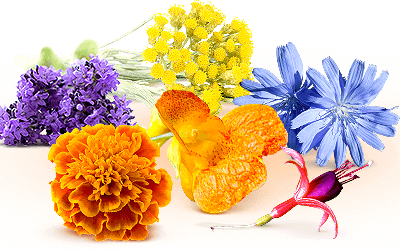Fiber is a vital part of a balanced diet, despite never being absorbed as it passes through the body. There are two types of fiber - soluble and insoluble - and both are important for healthy digestion. Soluble fiber slows digestion to prevent food from leaving the stomach too quickly after consumption. This helps create a feeling of fullness after eating, which can be helpful in maintaining a healthy weight. Insoluble fiber, on the other hand, adds weight and softness to waste products to aid their passage through the intestines, which is why it is often used for constipation.
Obtain your fiber from plant sources only. Meat and dairy products do not contain any, unless artificially fortified.
The recommended daily fiber intake for adults is 38 g for men and 25 g for women.1 It is often assumed that the best sources of fiber are whole grains, such as brown rice, oatmeal, and bran flakes. These are, indeed, excellent sources of fiber, but are not necessarily the tastiest way of consuming it. Keep reading to discover delicious and unexpected sources of soluble and insoluble fiber.
1. Prunes (Prunus domestica)
Dried prunes contain about 13 grams of fiber per cup, on top of being sweet and tasty. Prunes also contain sorbitol, a compound that helps regulate digestion. When eaten as a low calorie snack or a healthy alternative to sugar in your morning cereal, prunes are worth adding to your diet to regulate your digestive system and provide natural constipation relief.
2. Blackberry (Rubus fruticosus)
Out of all berries, blackberries are especially fiber-rich: raw, they provide approximately 8 grams a cup. Furthermore, they can be easily incorporated into various foods: they fit well in a summer salad, give color and nutrients to daily smoothies, or can be enjoyed on their own as a delicious snack.
3. Popcorn (Zea mays)
The traditional movie snack is also a notable source of fiber. Popcorn comes from the kernels of maize, which is rich in dietary fiber, potassium, and phosphorus. Three cups - taking into consideration the lightness of popcorn - offers 4 g of fiber. Alternatively, a scrumptious ear of corn on the cob can provide plenty of fiber as well.
4. Chia (Salvia hispanica)
Many people will probably remember the "Chia Pet" craze in the 80s, which popularized small clay vessels with a fast-growing, soft, thin grass growing out of them. However, chia was no new discovery for humans: anthropologists and archeologists have found that chia seeds were a staple food in Southern Mexico since Aztec times, and it is suggested that they were as economically important as maize.
Most likely, their importance lied in the amazingly balanced nutritional content in chia seeds: one serving (about 35 g) contains 5 grams of protein, 9 grams of healthy unsaturated fats, 18% of the recommended calcium intake, and 11 grams of fiber. Their modern revival is boosted by its versatility: they have a much more pleasant flavor than flax or other edible seeds. They are also a great addition to salads, muffins, bread, and other foods.
5. Apple (Malus domestica)
The quintessential portable snack, apples have long been considered an important ally for those who are looking for healthy nutrition or weight loss. The reason behind their nutritional importance lies in how easily digestible they are, with 4.5 grams of insoluble fiber per fruit. Finally, apples are highly versatile: they can be mixed into fruit salads, morning cereal with cinnamon, and everyone's favorite pies.
6. Avocado (Persea americana)
Avocado is something of a superfood with its high antioxidant and low saturated fat. At 14 g per avocado, it is an excellent source of fiber, too. Try mashing it up on your sandwich as a healthy alternative to mayonnaise or butter, or blend it with chopped onions and tomato to create a delicious guacamole.
By promoting healthy digestion, relieving constipation, and helping you feel fuller for longer after eating, fiber is an essential part of a balanced diet. Although whole grains are a great source of fiber, fresh fruits, vegetables, and nuts also allow you to add fiber into your diet in more delicious and inventive ways.
Sources
- Compendium of Medicinal Plants
- Medlineplus, High-fiber foods, 2012
- United States Department of Agriculture, Basic Report: 09003, Apples, raw, with skin | Basic Report: 09291, Plums, dried (prunes), uncooked | Basic Report: 12006, Seeds, chia seeds, dried
Footnotes:
- American Journal of Lifestyle Medicine. (2017). Closing America's Fiber Intake Gap. Retrieved March 22, 2021, from: https://www.ncbi.nlm.nih.gov/pmc/articles/PMC6124841/
